Ruter Lag (Ruter Teams) is a service for sports teams, where coaches, players and their families can travel alone or together by public transport before, during and after matches.
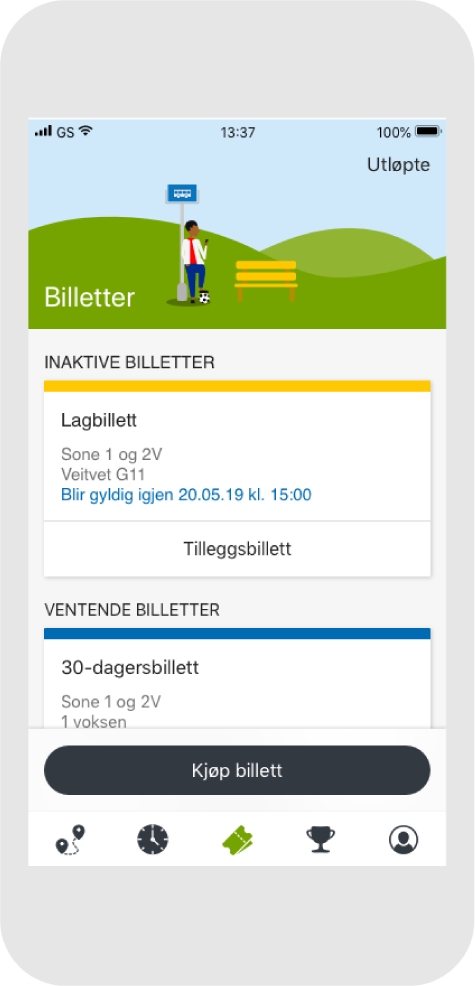
My role:
Me and Nikolai did many activities together but delegated sub-tasks to increase efficiency: During interviews, Nikolai was the smooth talker, while I documented and asked the critical questions from the sideline. When designing prototypes, Nikolai did the screens, while I synthesized insights and planned the user flow. At the final stage of the project, I prepared our visual materials like photos and mappings, while Nikolai planned our presentation and storytelling. We used each other regularly as sparring partners, passing work back and forth for iteration. When we were completely stuck, a short walk outside to get coffee together usually let our discussion flow freely around the problem at hand.

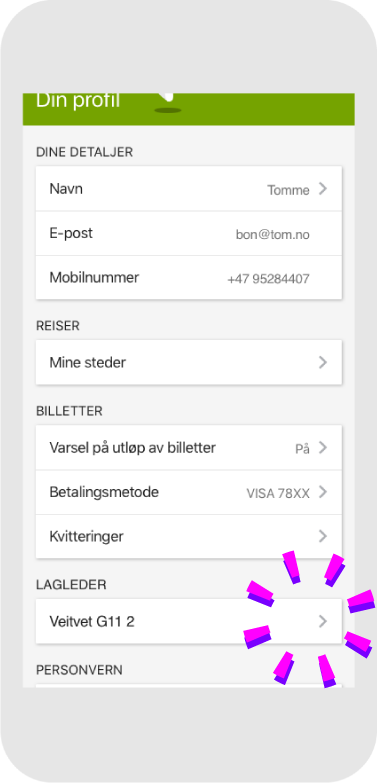
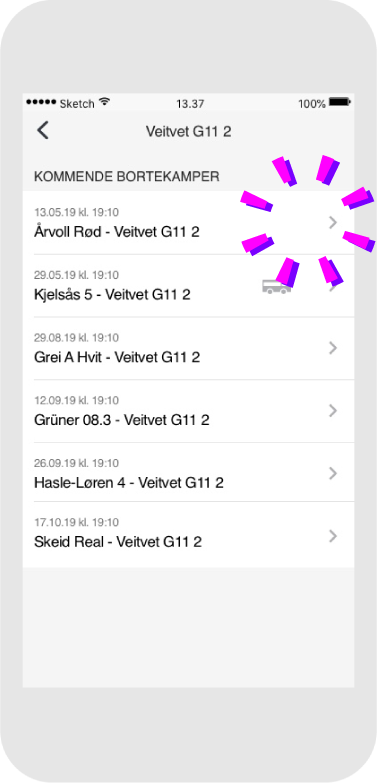
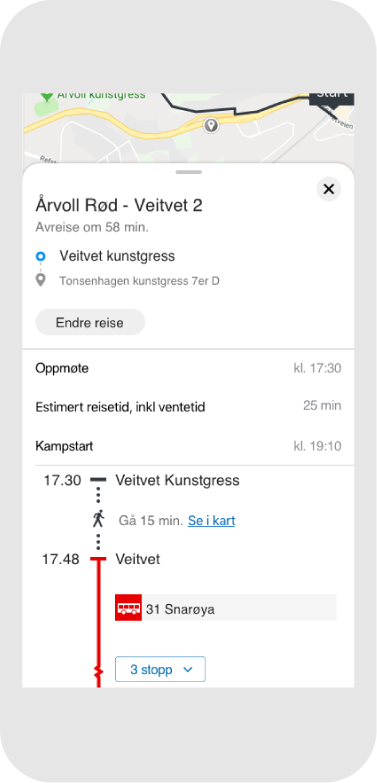
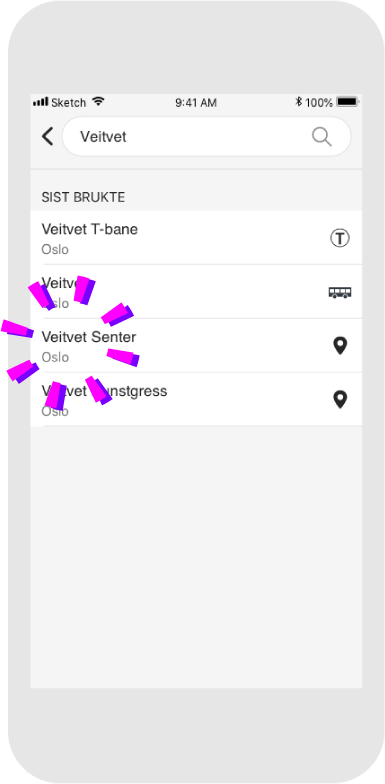


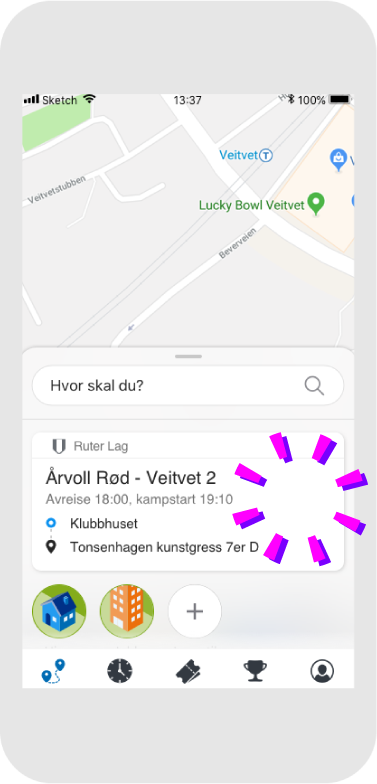
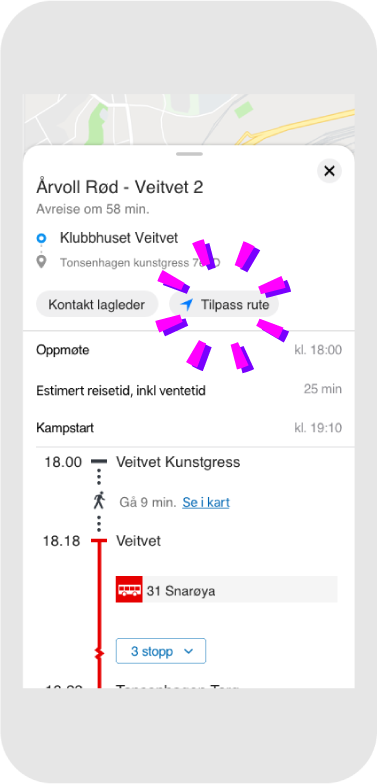
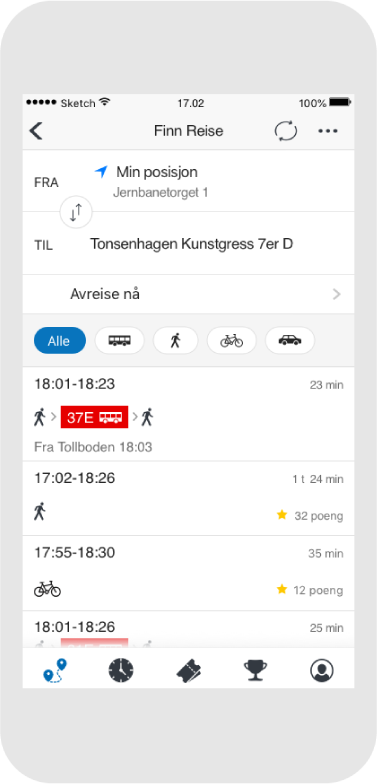
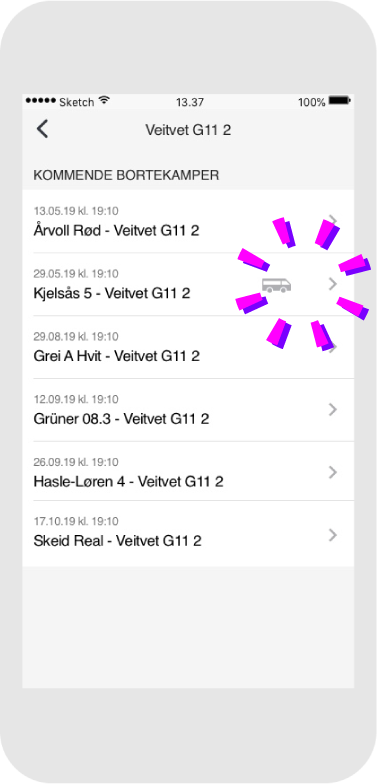
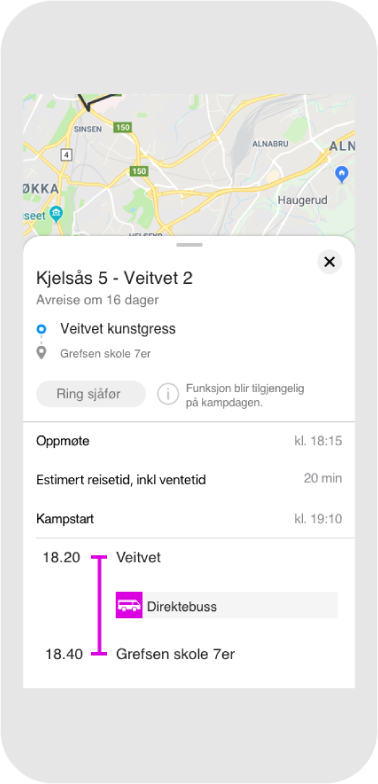

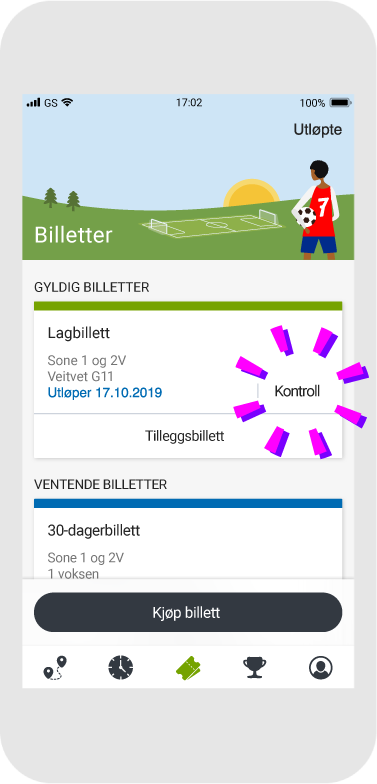
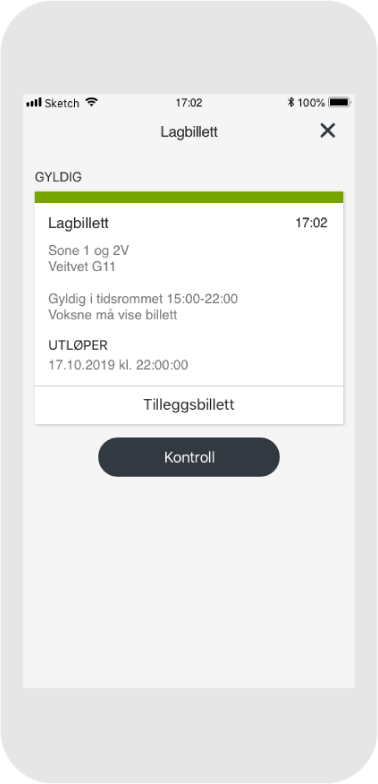
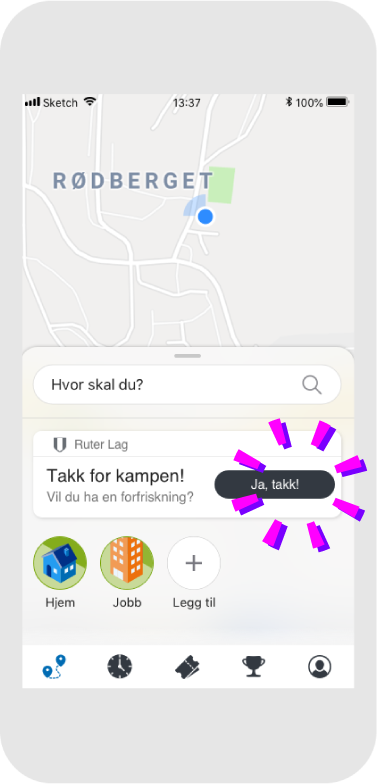
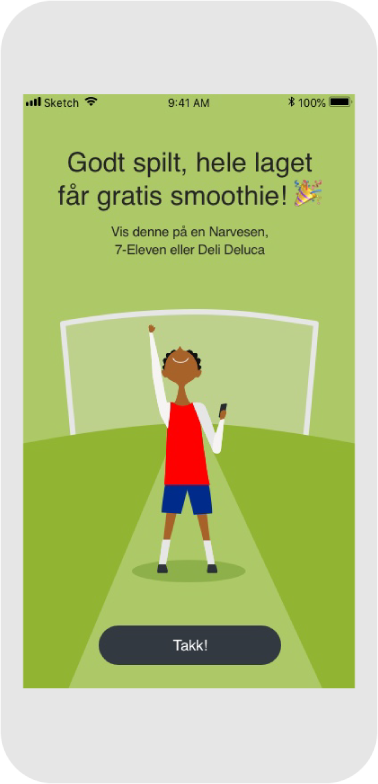
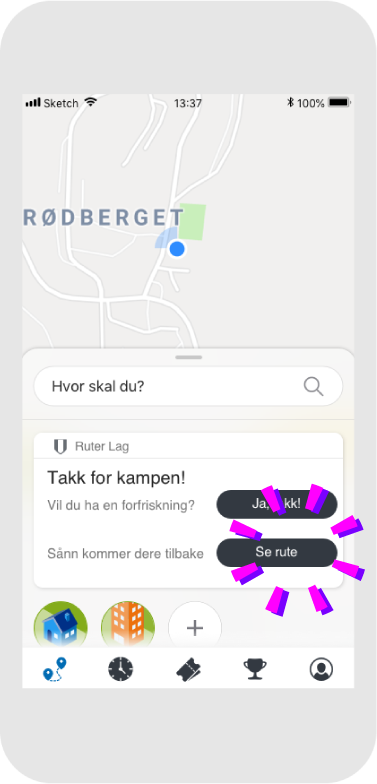
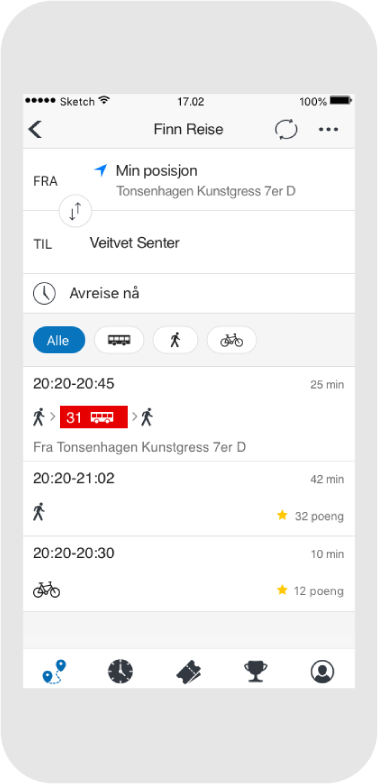
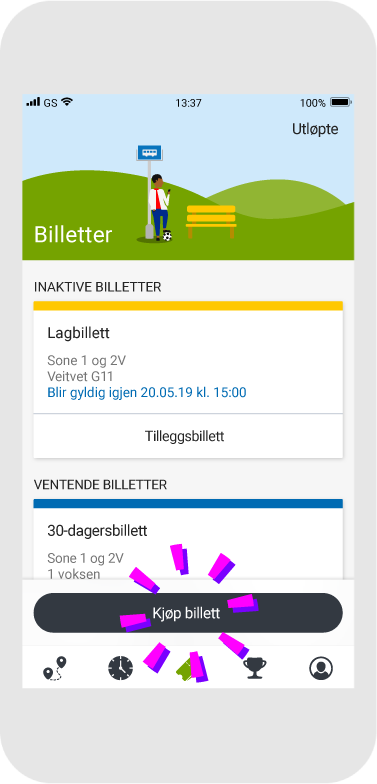
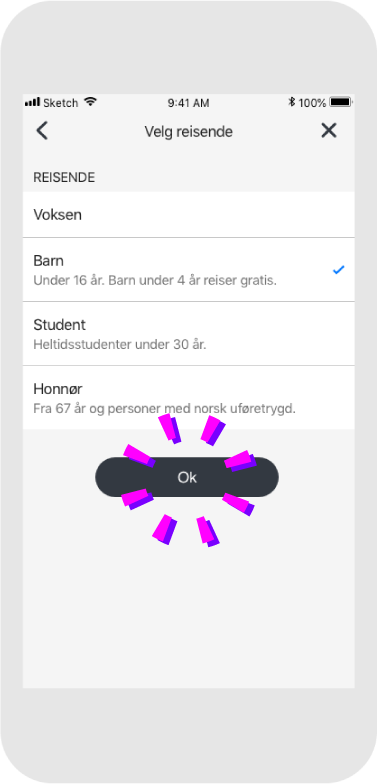
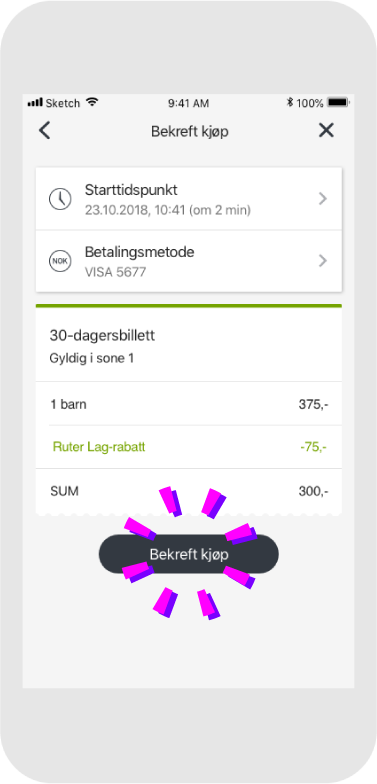
About 16% of Oslo’s population are registered soccer players. Adding parents, siblings and others traveling with the team, we can estimate that about 20% of the city’s inhabitants are set in motion by organized football through the week. Because the team’s destinations and travel times are set preseason, we imagine that a transport service could be more effectively delivered through closer coordination between Ruter and the national soccer association.
We wanted to buy 30 single tickets for 11 children av four adults round trip. The ticket machine allows for only 15 tickets to be purchased, rejecting the debit card on following purchases. The current ticket app permits 25 tickets to be purchased, but are then locked a single smartphone, preventing further individual travel. In the end, we got our 30 tickets by visiting a kiosk sales point. Afterwards we were then met with the challenge of keeping track of identical children’s and adult’s tickets, then diligently sorting the used ones from the unused. To track our expenses, we ended up with six different receipts in our hands.
Interviewing parents in different soccer clubs uncovered how costs of traveling exclude east side clubs: West side clubs experience that east side clubs don’t show up. An east side coach told us about issues getting enough parents to rideshare, having enough bikes to bike the shorter trips and lacking capacity to pay for tickets to away matches.
None of the days we traveled with the team we left on time: Both players, the coach and the subway were delayed. Out of nowhere a sister and a player from another team wanted to join for support. The waiting time made one of the players decide he’s had enough and hopped on the bus instead. And on top of all that, the whole team needed to pee. Parents also require flexibility: A mother had to leave in the middle of the game because her daughter had fallen off a horse on the other side of town and needed emergency care.
When the team had to travel to a far away match, we hired a minibus. This freed up a full hour from traveling, sorely needed in a busy family weekday, making time for dinner before the match. Parents could also do the dishes and put siblings to bed before showing up at half time, because the players had left together in the minibus.
The first time we traveled with the team, we noticed other travelers were visibly annoyed by a team of loud eleven year old getting on the subway. The mood changed however, when our coach saw the trip as a perfect opportunity for a pep talk about fair play and good team spirit. Several onlookers took off their headsets and nodded approvingly while the coach told the players to not use “dangerous words” towards the other team. The players wondered how many “dangerous words” they had to endure from the opposing team before they could hit them back. When we left the subway, we saw other travelers smiling at us, as if they were wishing us good luck.
Together with the coach, we noticed how much the time together after the match affected the players. The coach could use the time to either celebrate the victory, or help the team get over a disappointing loss. “Normally they just go home sad in their parent’s car.” While the day has been a rush from the moment the morning alarm went off, suddenly the time squeeze lifted itself after the match. In other words, this is an opportunity for new cultural meaning and community.
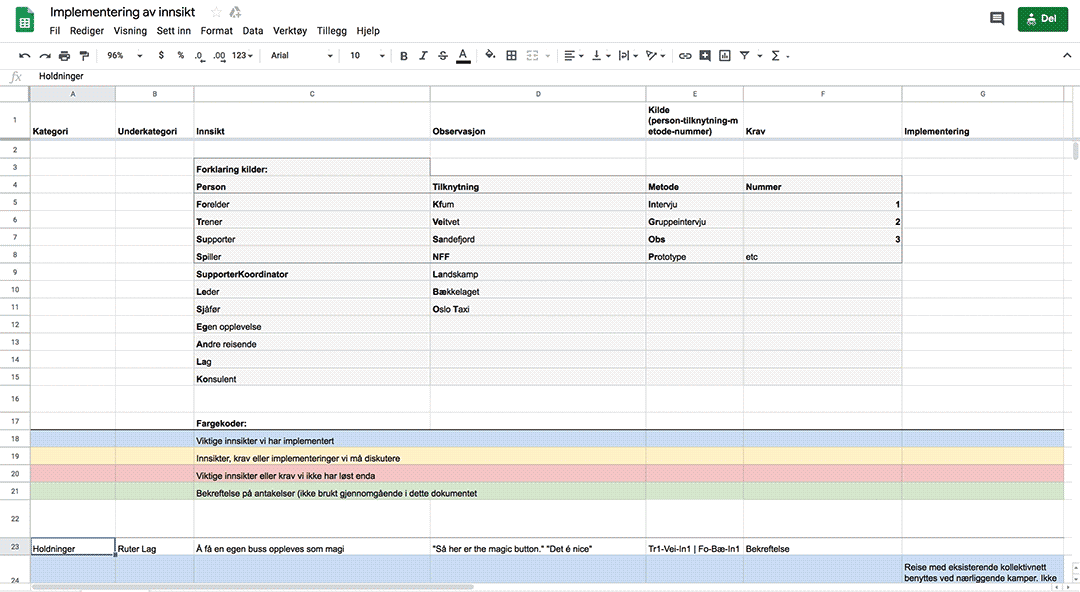
The insight database is structured by categories sorting insights by topics. Every insight is linked to an observation we collected during interviews, participatory observation or prototypes. Each observation is in turn linked to an informant code, letting us keep track of sources while still maintaining confidentiality. The last two columns are what implication or requirement the insight set for our solution and how we implemented it in the final design proposal.
When we approached the national soccer association (NFF) at the beginning of the project, they seriously considering how they can reduce the carbon footprint of their activities. When presenting the final design proposal to them, they were pretty eager to scale this up nationally. Their “Eat Sleep Move” program is already promoting walking, biking og ride sharing to matches, and public transport would be a natural extension. They also insisted that Ruter Lag would be of interest to the greater national sports association.
After leaving NFF with high praises, we met with the local season planners. While they liked the concept, they could “never” plan the matches according to the public transport routes. They simply have too many factors to account for already. They admitted that due to the high ratio of matches to soccer fields, some matches get scheduled undesirably early or late. There is a dire need for more soccer fields.